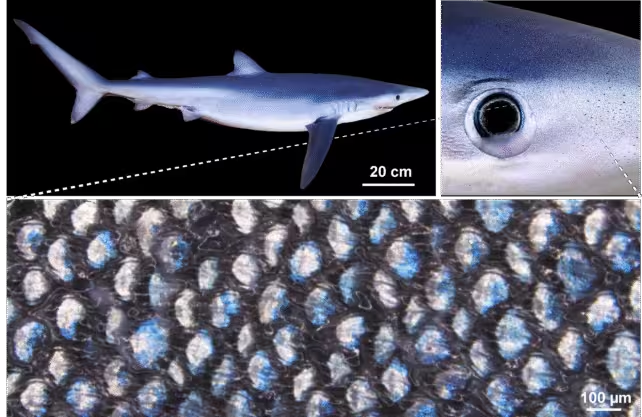4 Minutes
Revealing the True Nature of Blue Shark Coloration
Scientists have uncovered a surprising ability in the blue shark (Prionace glauca), a widely distributed ocean predator: the potential to change its skin color in a manner reminiscent of chameleons. In a groundbreaking study conducted by a research team at the City University of Hong Kong (CUHK), detailed nanoscale investigations into the shark's skin revealed sophisticated structures that enable more than just their iconic blue appearance—they may facilitate dynamic color shifts in response to environmental changes.
The Science of Animal Coloration
Animals achieve their striking colors through a range of biological mechanisms. Some rely on cells that contain colored pigments, which selectively absorb and reflect certain wavelengths of natural light. Others, like the iridescent peacock, utilize microscopic structures that scatter light to create vivid hues. However, only a select group of species, such as chameleons, possess the remarkable ability to actively alter their coloration by modifying how these wavelengths are processed in real-time.
Nanostructures Hidden in Shark Skin
Blue sharks are named for their deep blue dorsal sides that blend into lighter bellies, making them effective open-ocean hunters. Their skin is armored with tiny, tooth-like scales known as dermal denticles. Utilizing advanced technologies—including optical and electron microscopy, spectroscopic analysis, and high-resolution imaging—the research team discovered that beneath the surface, these denticles house ‘pulp cavities’ containing unique color-producing elements.

The Role of Guanine Crystals and Melanin
Within the pulp cavities, researchers identified crystallized guanine, which reflects blue light, paired with melanin-filled sacs that absorb other colors in the spectrum. Molecular biologist Viktoriia Kamska of CUHK described, "The components are distributed in specialized cells—some act like bags of mirrors, others like bags of black absorbers—packed closely to optimize their collective function." This structural composition not only creates the characteristic blue but also opens possibilities for variable coloration depending on the spatial arrangement of these nanostructures.
Potential for Adaptive Camouflage
Further analysis suggested that changing the spacing between layers of guanine crystals could enable blue sharks to shift hues—from blue to green or even yellow. Such a mechanism would be strikingly similar to how chameleons orchestrate their own color changes. In practical terms, this adaptation could empower sharks to fine-tune their camouflage based on depth or ambient light conditions. For example, increased water pressure at greater depths may compress the crystal layers, resulting in a darker skin appearance to blend seamlessly with the ocean’s depths.
Implications and Next Steps in Research
Although this color-shifting ability in blue sharks has been demonstrated in laboratory simulations, field studies are the next step. The research team aims to observe these mechanisms in wild sharks to gain a deeper understanding of how evolutionary nanotechnology provides advanced forms of camouflage within marine ecosystems. Such insights could have far-reaching implications—not only enriching our knowledge of shark biology and animal coloration but also informing biomimetic engineering and advanced material science.
Conclusion
This discovery adds a new layer to how we understand marine camouflage and the intricate adaptations of the blue shark. As research progresses, uncovering the functional role of these nanoscale structures may shed light on evolutionary solutions to survival in the ocean—and could inspire innovative applications in science and technology.



Comments